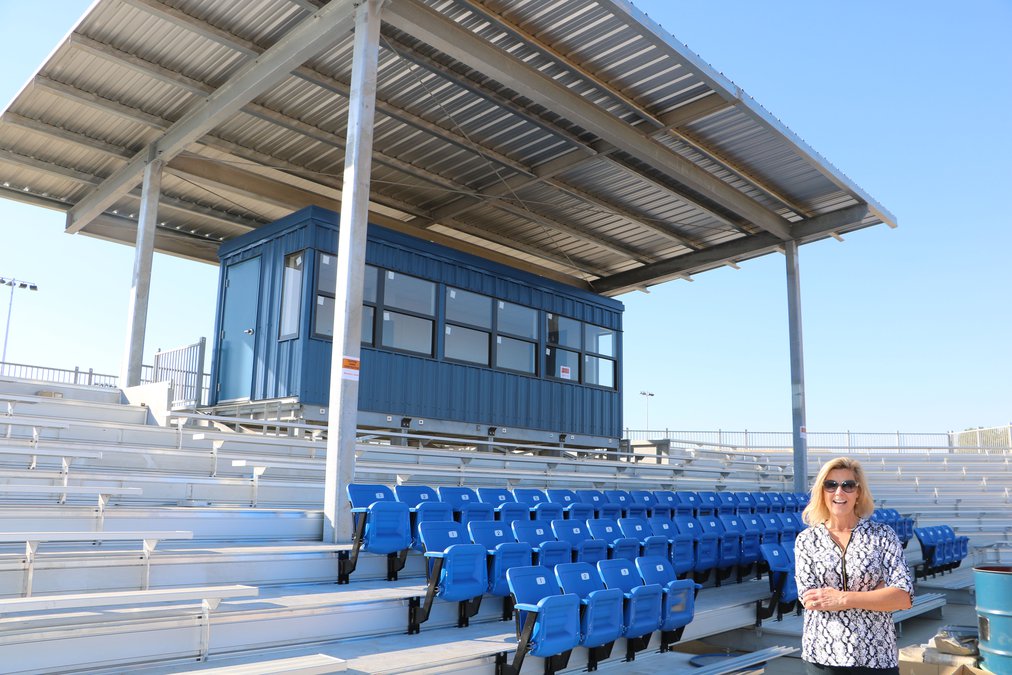River Islands could land the South County’s first boutique-style hotels as well as snare grocery stores that are more on the caliber of Whole Foods or smaller concerns such as Podesto’s in Stockton’s Lincoln Village.
It’s because the three commercial areas that are being pursued in the 11,000-plus home planned community aren’t being designed for big box — or even small box — retailers. Instead of being dominated by large buildings and large parking lots River Islands is working to create an experience that is more like San Jose’s Santana Row especially in the town center. In addition there will be commercial intermixed in a promised transit village with apartments planned when the Valley Link BART extension reaches River Islands.
The town center is at the base of the River Islands Parkway bridge crossing the San Joaquin River. It is here where work is nearing completion on the 500-seat Islander baseball stadium nestled against a portion of the eventual 18-mile continuous greenbelt trail that will encircle the planned community without worry of a street level crossing. Next to the baseball field are a series of lighted soccer fields.
The commercial area will literally be designed as a town center complete with housing above storefronts and restaurants that will surround a park-like square leading to the levee with a commanding view of the San Joaquin River.
Plans call for 668 living units in the town center. Some will be in traditional apartment complexes while others will be second floor condo-style housing that has become extremely popular in trendier sections of San Jose.
“The idea is to create a population base that lives in the town center that will keep it vibrant,” noted River Islands Project Manager Susan Dell’Osso. “With 668 living units, that would provide the town center with about 1,500 residents who would support restaurants and shops.”
That, of course, is in addition to being able to draw from a customer base of over 30,000 residents after buildout as well as from the rest of Lathrop and nearby communities. A good number of other River Islands residents would be able to reach the town center on foot or bicycle with relative ease due to an abundance of planned footpath corridors besides sidewalks.
River Islands intends to eschew chain restaurants and such for the most part to create a unique shopping and entertainment experience that mirrors the overall design of the development.
Dell’Osso said the plan is to seek boutique-style hotels to take advantage of the business park that is restricted to people intense concerns such as headquarters, back offices, and such given distribution centers and endeavors with more than just occasional truck movements are prohibited.
“It might seem a long way from freeways but it is pretty close,” Dell’Osso said of the town center as being a solid site for a boutique-style hotel.
Dell’Osso said the regulation baseball complex has already booked tournaments and games that will have a draw beyond the South County that will likely generate a demand for hotel space similar to what Big League Dreams does in Manteca but not on as grand of a scale.
“Right now it is difficult to get hotel space (in Manteca and Lathrop),” she noted.
The three commercial centers were placed intentionally on the edges of the development so any non-island traffic generated will have a minimal impact on neighborhoods.
The town center was deliberately placed at the base of the River Islands Parkway bridge so it can grow into a town center for all of Lathrop.
“It is very important to us that we are part of Lathrop,” Dell’Osso noted, adding the community doesn’t currently have a downtown or town center.
The fact the new Lathrop Police station is being built in the town center is one way of sewing the fabric of the community together so the river doesn’t split the city in half beyond in a physical manner.
Dell’Osso indicated the concepts for the commercial areas will be fine-tuned as the tipping point for development to start nears. Currently there are 1,000 homes occupied with 3,000 residents.
To contact Dennis Wyatt, email dwyatt@mantecabulletin.com





